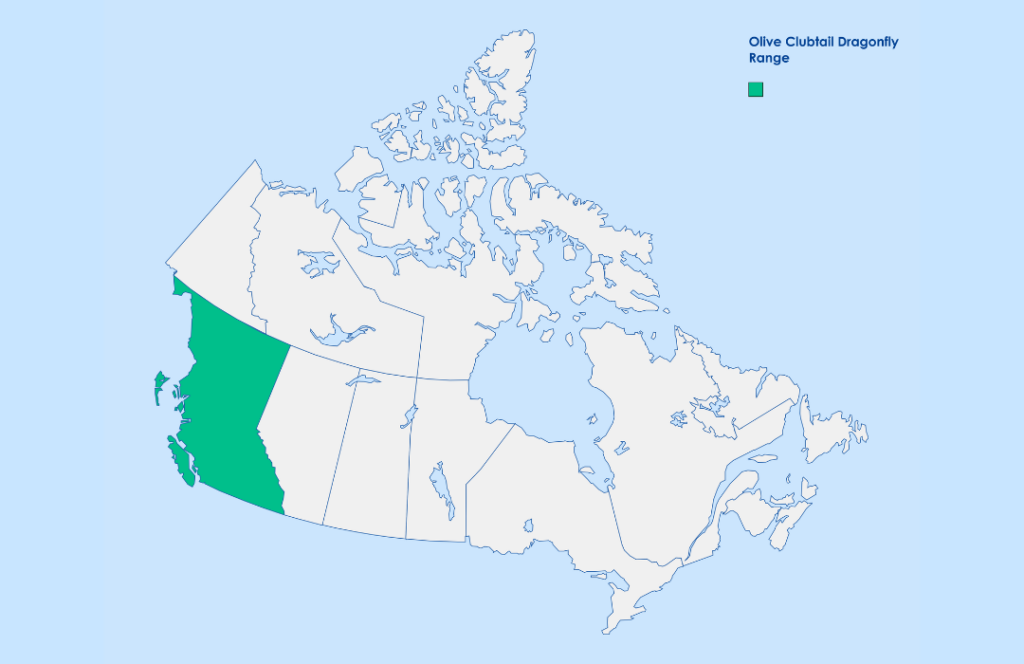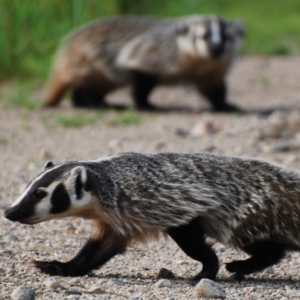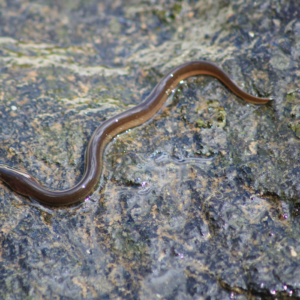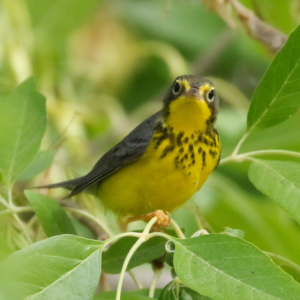Olive Clubtail Dragonfly
Despite the name “olive,” this dragonfly’s most striking feature is its blue eyes. Seeing this dragonfly could be hard, though, as the species is endangered. Save endangered species today by joining one of our campaigns!
Help End the ExtinctionVital Signs
- Common name: Olive Clubtail
- Latin name: Stylurus olivaceus
- Conservation Status: Endangered
- Range: British Columbia
- Life span: Unknown, but live as larvae for two years
- Size: 5.6-6 cm in length

The Olive Clubtail Dragonfly has a grey-green chest and a black abdomen. It has brown stripes on its shoulders, and the end of the abdomen looks swollen (especially on the males), like a club. The eyes, which are blue in colour, are set far apart on the head.
Olive Clubtail Dragonfly Facts
- The larvae are predators that live and hunt underwater for 2 years
- Females lay eggs by dropping them onto the surface of water
- Is one of the only dragonflies in British Columbia that develops in streams. As a result, its presence can indicate if a stream ecosystem is healthy
- Males waiting to mate fly out over water at the breeding ground. If they encounter another male, they’ll chase him
Threats
The Olive Clubtail is at risk due to man-made changes to rivers and various types of human developments. Swimming at beaches has also disturbed this species and affected the survival of larvae.
Another big threat to this species is pollution. This can come from land development, agricultural practices, sewage, nearby forestry activities, and pesticides.
What’s Being Done
This species is federally protected under the Species At Risk Act. The British Columbia Parks Act protects dragonflies that live in parks and provincially protected areas. Unfortunately, very few of these areas overlap with the Olive Clubtail’s habitat.
Canada has committed to the goal of protecting 30% of lands, ocean, and freshwater in Canada by 2030. This goal will help protect ecosystems, restore habitats, and fight climate change. All these things are a step in protecting Canada’s at-risk animals—so let’s hold the federal government to their promise.
How to Help
- Inspire Change: Farmers in the Okanagan Valley can educate themselves on pesticide-free farming techniques.
- Learn: Stay informed about endangered species by signing up for Nature Canada’s monthly e-newsletter.
- Make Earth-Friendly Consumer Choices: When possible, choose products that come from natural farming methods (this also discourages pesticide use).
- Help Out: Minimizing disturbances to the Olive Clubtail’s home will promote a natural shoreline for the dragonflies’ habitat. Contact BC Nature to get involved with their conservation efforts!
- Find out more: Help us end the extinction by taking action for nature today—visit conservation websites like Nature Canada or join one of our campaigns!
Resources
- COSEWIC – Assessment and Status Report
- SARA – Species Profile
This profile was originally edited by Karolina Lada. Updated in August 2022 by Simona Casale.



